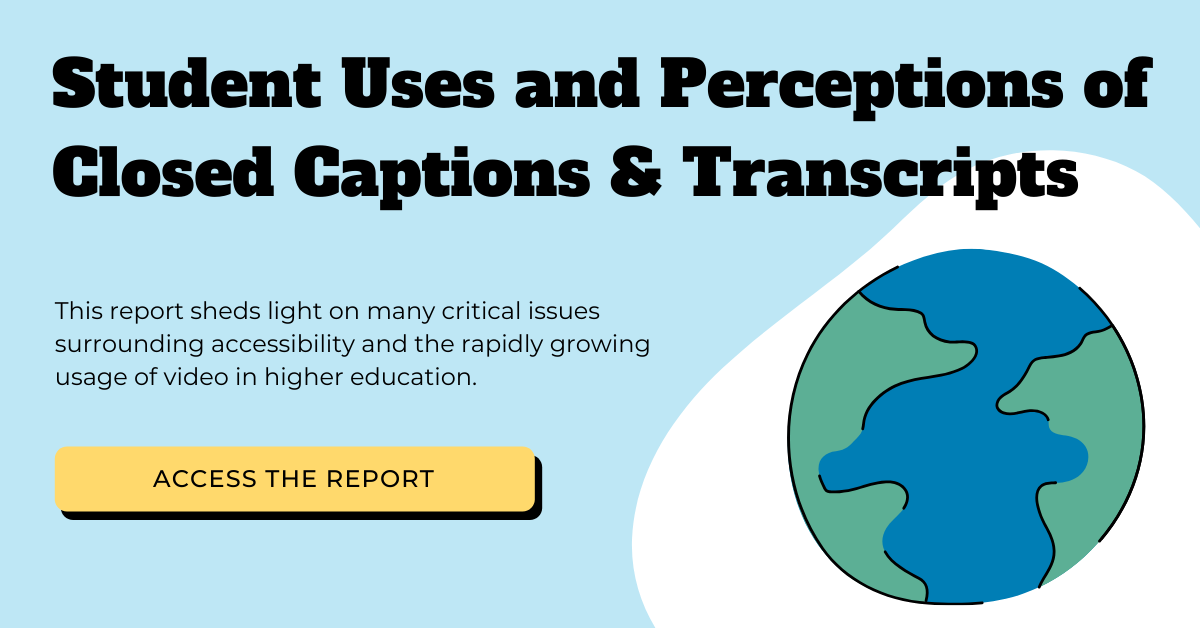Studies Find Captions Improve Engagement with Online Video
Updated: March 4, 2021
Captions make videos more accessible to people who are deaf or hard-of-hearing, but the benefits go beyond accessibility. Several studies show that captions improve engagement from users with online videos.
Research findings from Verizon Media, Facebook, and several universities reveal that captions help viewers to stay focused and to comprehend more information. Plus, captioned videos support brand awareness and brand recall.
The studies reveal that captions are beneficial on an educational and a marketing level as they provide a better overall user experience for everyone, not just those with disabilities.
Professional Marketers Use Captions to Improve Video KPIs
Verizon and Publicis Media conducted a study on the relationship between videos, sound, and captions. This study highlights user preferences and behavior and supports the theory that captions play a significant role in the video-viewing experience. It also shows that videos with captions perform better than videos without captions:
- Captions improve brand and ad recall within the first 6 seconds of viewing a video ad.
- Video ads with captions increase ad memory quality.
First-party data reveals that 92% of consumers watch videos on mobile and 83% on desktops with the sound off. Due to this viewing behavior, marketers are rightly concerned that viewers are muting their videos and missing the content. That’s where captions come in.
One in three individuals has captions on in public environments because it lets them watch videos without any audio. Captions improve engagement by giving viewers the experience they crave – soundless and unobtrusive – leading to improved video performance.
Captions Proven Impactful in Online Classrooms
Because captions improve engagement, researchers have discovered their positive impact in classroom environments.
The accessibility committee at the University of South Florida St. Petersburg (USFSP) conducted a report which gives insight into student’s uses and perspectives of captions and interactive transcripts in online courses.
The results show the power of captions and interactive transcripts and their capacity to improve students’ performance.
- 42% of students use closed captions to help maintain focus.
- 38% of students use interactive transcripts to help with information retention.
- Test scores increased by 3% for students who used closed captions.
- Test scores increased by 8% for students who used interactive transcripts.
Social Media Video Viewership Boosted by Captions
After conducting an internal study on user behavior, Facebook found that captions increase view time for Facebook videos by 12%. If that’s not proof that captions improve engagement, then what is?
A client in the study saw an increase in watch time of 25% for captioned videos. There’s no shortage of social media video content, and seeing this kind of growth in viewing time is not a small achievement.
Another key finding from Facebook’s study was that 80% of Facebook users react negatively to video ads auto-playing with the sound on. Not only that, but 41% of videos are incomprehensible without sound or captions.
The last thing anyone wants is for people to scroll right passed their videos due to incomprehensible content. One can avoid this from happening by supplying captioned social media videos.
Discover Digital Network Sees Increase In Views with Captions
Discovery Digital Networks added closed captions to their YouTube videos, but they wanted to quantify its value. Using 3Play Media’s captioning and transcription services, Discovery Digital Networks conducted a controlled study on the effects of adding closed captions to YouTube videos.
Here’s what they found:
- Adding captions to YouTube videos increases views significantly.
- Views for captioned videos increased by 7.32% overall.
- The greatest rise in views occurred within the first two weeks of adding captions, with a 13.48% increase.
Because captions improve engagement, Discovery Digital Networks reaped the benefits and saw an increase in views overall for their YouTube videos.
Students Without Disabilities Report Captions Help Them Focus
In collaboration with 3Play Media, the Oregon State University (OSU) Ecampus took a close look at how and why students use closed captions and transcripts.
This study answers questions about the use of closed captions in on-campus classes and on a nationwide scale. Fifteen colleges and universities across the country participated in this study. In total, 2,124 students responded to the survey, with a relatively even mixture of freshman, sophomore, junior, senior, and graduate students.
The study revealed that because captions improve engagement for everyone, students with and without disabilities were using captions for many reasons. The most common reason students without disabilities opted to use captions was to help them stay focused.
Here’s what the study found:
- 71% of students without hearing difficulties use captions at least some of the time.
- 75% of students indicated that they use captions as a learning aid.
- 52% said that captions specifically helped them with comprehension.
- 20% said that captions kept them more engaged.
The facts don’t lie – the benefits of captioning go beyond accessibility. Captions improve engagement, help students in the classroom, and improve the overall performance of videos.
Further Reading

Subscribe to the Blog Digest
Sign up to receive our blog digest and other information on this topic. You can unsubscribe anytime.
By subscribing you agree to our privacy policy.










